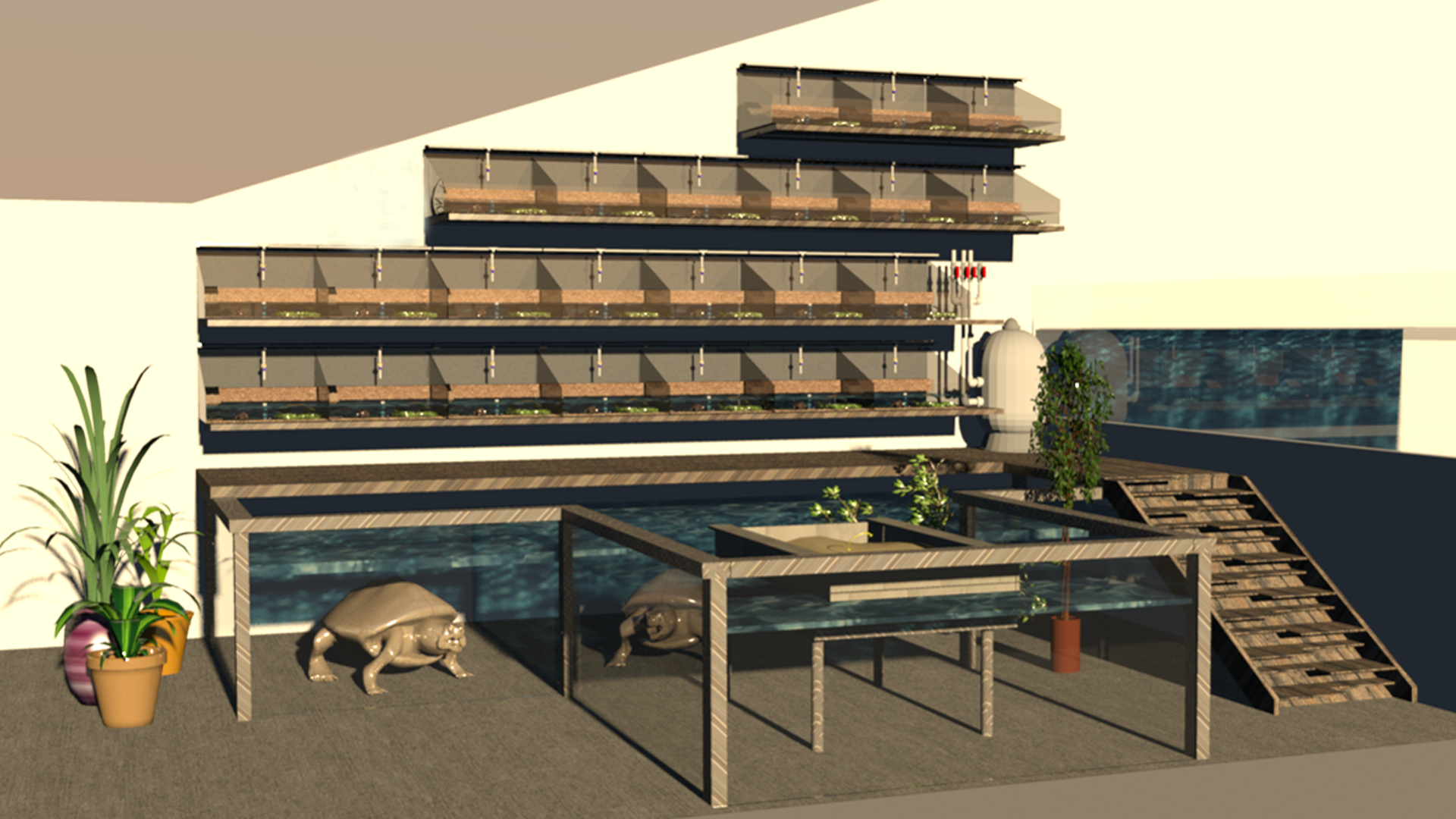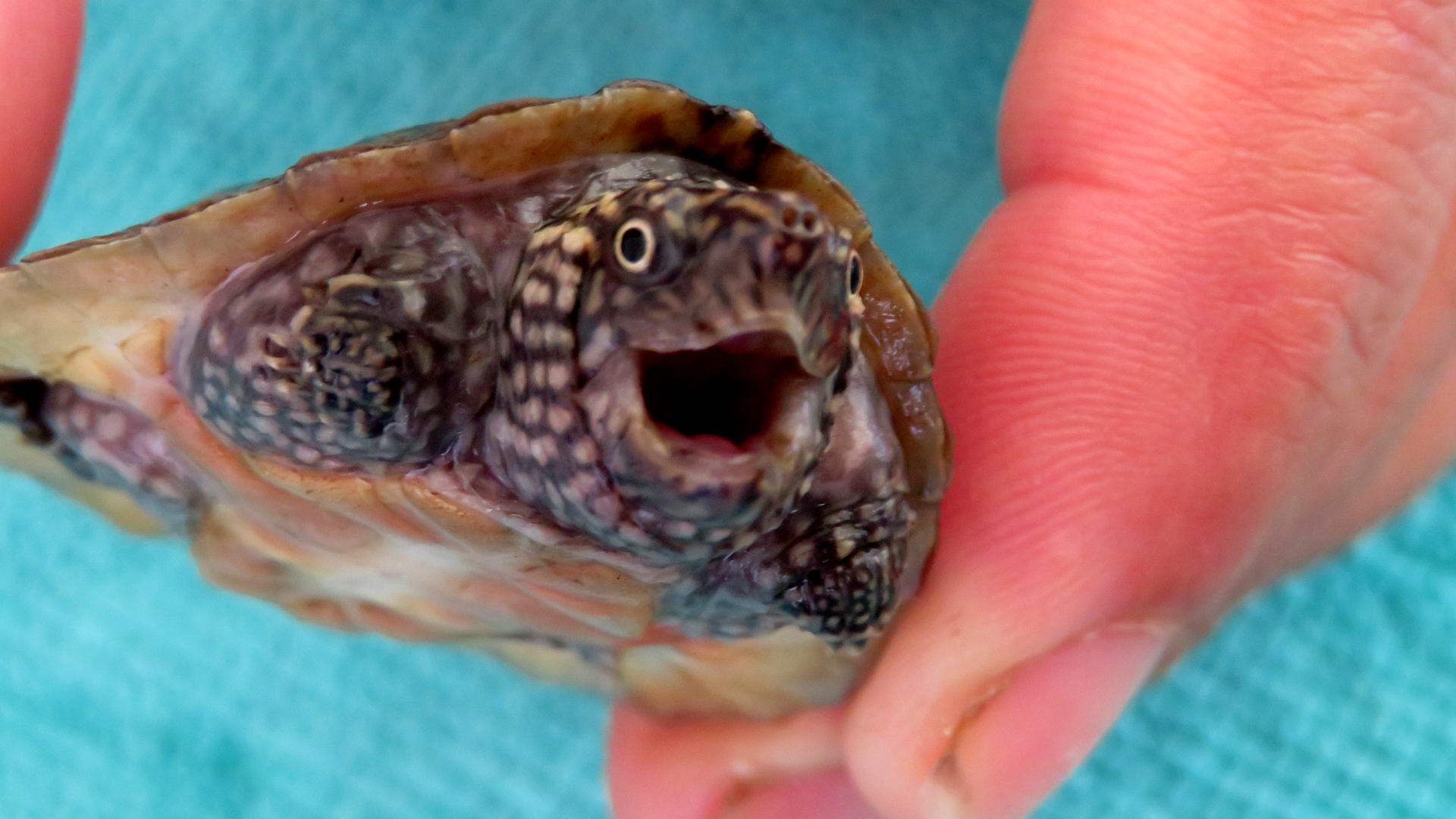THE COUNTRY
USA
ABOUT THE ANIMAL
Common Name: Flattened Musk Turtle
Scientific Name: Sternotherus depressus
MEET AMERICAS SMALLEST AND RAREST TURTLE
The Flattened Musk Turtle (Sternotherus depressus) is the smallest and rarest turtle species in the United States. Adults are less than 10 cm (4 inches) long, while hatchlings are no bigger than a coin. As their name suggests, they have uniquely flat shells—an adaptation that allows them to slip into narrow crevices in streambeds to hide from predators. Though it may look like they’ve been stepped on, this flattened shape is a survival strategy. Their spotted pattern is a perfect camouflage on the sandy bottom of creaks.
Listed as Critically Endangered by the IUCN, the species faces extinction due to habitat destruction, climate change, and illegal poaching.
A HABITAT IN CRISIS
The Flattened Musk Turtle is highly specialized for life in fast flowing, clear streams, where it relies heavily on its favorite food, water snails. These snails are very sensitive to water pollution and have vanished from the region due to runoff from local coal mines. As a result, both the turtles and their food source have suffered severe declines. Today, the Flattened Musk Turtle survives only in the Black Warrior River drainage of northern Alabama. Historically, it occupied the entire Black Warrior Basin, an area spanning nearly 18,000 square kilometers (7,000 square miles) across Alabama and Mississippi. Today, its range has shrunk dramatically. These turtles cling to survival in isolated, clear-water streams with rocky bottoms, where their flattened shells allow them to hide in crevices, one of their only remaining defenses.
Over 93% of their natural habitat has been destroyed. Runoff from coal mining has clogged streambeds with silt and coal dust, wiping out the invertebrates they feed on. Pollution from sewage, climate change, and poor land management continues to poison the waters they depend on.
Because the streams they inhabit are fast-flowing, Flattened Musk Turtles don’t swim in the traditional sense, as doing so would risk being swept away. Instead, they scurry along the bottom with their tiny legs, climbing over and around rocks with surprising agility, even hanging upside down on the undersides of stones like little aquatic monkeys. When threatened by a predator and unable to reach cover in time, they press themselves flat against the streambed, remaining motionless and blending in perfectly with the rocks, a remarkable camouflage strategy that helps them avoid detection.
Although the Flattened Musk Turtle is protected under both federal and state law, active conservation efforts remain minimal. Other than at Turtle Island, only a few individual Flattened Musk Turtles exist in captivity, too few to establish viable assurance colonies. Wild populations are critically low and continue to decline. Without urgent, sustained intervention, and without the large, genetically diverse group housed at Turtle Island, this species has no viable path to recovery and faces near-certain extinction.
TURTLE ISLAND CONSERVATION EFFORTS
Turtle Island is currently the only turtle conservation center with a large enough assurance colony to support long-term rewilding of the Flattened Musk Turtle.
The foundation of Turtle Island’s assurance colony dates back to the 1970s, when Reiner Praschag (father of Turtle Island’s founder, Peter Praschag) collected Flattened Musk Turtles alongside renowned turtle experts Robert “Bob” H. Mount and James “Jim” Logie Dobie. The turtles were collected from two distinct locations, the Sipsey Fork and the Locust Fork, and have since been maintained and bred as separate lineages to preserve genetic diversity.
Even then, these specialists recognized the looming threats of habitat loss, pollution, and fragmentation. Together, they made the visionary decision for Reiner to establish a small breeding group in Austria as a safeguard for the future of the species.
Breeding this species in captivity is challenging, but we’re committed to doing whatever it takes to prevent its extinction. Our plan includes the construction of a new habitat: a custom-designed facility featuring 40 individual tanks with a state-of-the-art filtration system. This setup will allow us to provide specialized care, optimize breeding conditions, and maintain genetic diversity. These tanks will be housed along a boardwalk above the enclosure of our resident Alligator Snapping Turtle, “Greg.”
Their ongoing survival depends on our ability to breed and maintain their viability in captivity as we work to maintain their natural habitat and reintroduce them into protected areas over the long term. In many ways, breeding these turtles in captivity is a daunting task.

LOOKING AHEAD
With your support, Turtle Island is working to reintroduce captive-bred Flattened Musk Turtles into protected areas within their former range. This project represents a vital step toward saving a species on the brink of extinction and a powerful example of what dedicated conservation can accomplish.
You can be part of this mission. By donating to Turtle Island, you help fund the specialized care, food, and enclosure this species needs to survive and thrive. Your support will directly contribute to building and maintaining a cutting-edge breeding facility, laying the groundwork for successful future rewilding.
Together, we can give America’s smallest and rarest turtle a fighting chance.

